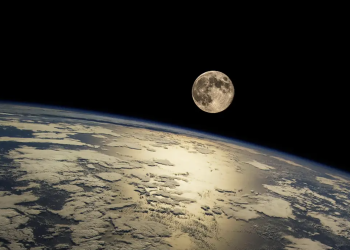In 2011, a mysterious and ghostly figure, dubbed “the mitten,” emerged on Greenland’s ice sheet after the unexpected collapse of a subglacial lake. This eerie depression, spanning several kilometers, stunned scientists who were observing the remote area via satellite images. The sudden appearance of this icy phantom provides a stark reminder of the planet’s changing climate and the dramatic forces shaping its polar regions.
As reported by Live Science, the strange formation was first observed in the Flade Isblink ice cap, an extensive 8,550-square-kilometer glacier located along Greenland’s northernmost edge, deep within the Arctic Circle. The depression itself measured around 3 kilometers long and 2 kilometers wide, plunging to a depth of 70 meters. The bizarre figure appeared as if waving from the icy landscape, immediately catching the attention of NASA scientists. According to NASA’s Earth Observatory, it formed between August 16 and September 6, 2011, when the area was obscured by cloud cover in satellite imagery.
What Caused the ‘Mitten’?
In a 2015 study, researchers revealed the cause behind this unusual phenomenon: the rapid drainage of an underground subglacial lake. When the lake beneath the surface suddenly emptied, it left behind a massive void, causing the ice above to collapse and create the ghostly figure. The study estimated that water was draining from the lake at a staggering rate of 215 cubic meters per second during the event, marking a significant moment in glaciology. NASA glaciologist Kelly Brunt, though not involved in the original study, remarked that this was likely the first documented case of such a rapid drainage event in Greenland, where subglacial lakes are usually considered stable.
As explained by Live Science, since the initial collapse, scientists have closely monitored the area. In 2022, they found that the lake has been slowly refilling since 2012, with the ice floor rising by 55 meters over the years despite another, smaller drainage event in 2019. Interestingly, surface meltwater alone accounted for only 65% of the lake’s refilling, suggesting an unknown source of water contributing to this ongoing process.
Climate Change’s Role in the Collapse
While the exact reason for the lake’s sudden collapse remains unclear, researchers suspect that human-driven climate change may have played a role. Rapid ice melt and increased water flow into subglacial lakes, driven by rising global temperatures, could potentially destabilize these underground reservoirs. This theory gains support from similar events observed in Antarctica, where collapsing subglacial lakes have accelerated ice loss, posing a long-term risk to polar regions.
As we continue to explore the implications of this event, it becomes evident that Greenland’s “mitten” serves as a haunting symbol of the unpredictable and powerful forces at play beneath our planet’s ice sheets. It also underscores the importance of understanding how these changes affect global sea levels and the Earth’s climate system. As climate-related phenomena continue to unfold, we are left to wonder: What other secrets lie hidden beneath the ice, waiting to be revealed?











